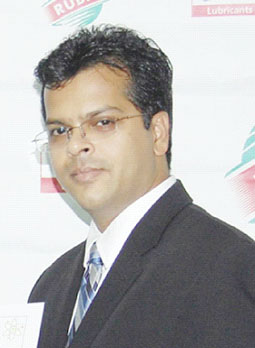As it continues to examine alternative means of generating electricity, the Guyana Energy Agency (GEA) plans to install more solar powered, energy-efficient street lights this year.
Chief Executive Officer of the GEA Mahender Sharma told a Ministry of Public Infrastructure press conference last week that a major plan of the agency is to see the nation being more energy conscious and a plan will be crafted to educate the populace on the myriad ways to save energy.

Other plans include installing more grid-connected photovoltaic (PV) systems at schools, installing more energy-saving street lights in Bartica, installing a 15 to 20kW hydropower system, provide 20 energy-efficient institutional stoves to live-in schools, pilot test an electric vehicle and get local hotels to install solar water heaters as compared to those that work with electricity.
Sharma revealed that his agency has procured a 10kW solar PV system which will be installed at the agency’s head office in Quamina Street.
The system will result in annual savings of close to $1M while at the same time avoiding carbon dioxide emissions, he said.
According to Sharma, the savings totalled $800,000 last year when the agency switched some of the city’s street lights to solar.
It was revealed that the GEA also repaired and rehabilitated PV equipment at four schools which can generate 1.655kW of power.
Meantime, wind and biomass energy are being explored even as the energy agency continues to coordinate with other countries to gather information to support an IDB funded pre-feasibility study to explore the possibility of an electrical interconnection and generation expansion project involving Guyana, Brazil, Suriname and French Guyana.
To this end, Sharma said the GEA will continue to monitor and record wind data, speeds and direction, at four sites –Port Mourant, Kumu, Mahdia and the University of Guyana.
They have also assisted the Hinterland Electrification Company Inc in selection and evaluation of 15 potential wind sites along Guyana’s coast and the best four will be chosen to carry out wind measurements.
In terms of energy from biomass, a 400kW/h gasification system was installed in Region 2 by a private rice miller with the assistance of The Energy Research Institute of India.
In addition, 100 energy-efficient wood stoves were distributed and demonstrated in a pilot project involving 10 households in 10 hinterland communities.
Additionally, another 10 stoves were distributed to nine hinterland residential schools which resulted in an 80% reduction in the amount of the firewood used when compared to the open fire style of cooking.
Sharma said the GEA’s engineers also conducted research in a number of areas namely hydropower, natural gas, vapour recovery systems, biomass, wood waste potential, energy potential from rice husk, gasification systems, refrigerant replacement, and solar-powered and energy efficient street lights.
Energy assessments at government buildings and schools were also done with the aim of reducing energy consumption. Further, a survey for the installation of LED and solar street lighting was also carried out to assess the suitability of using both grid-powered LED and standalone solar street lights where applicable.
GEA also identified a suitable location to conduct wind measurement and is currently awaiting the relevant approval to install a wind mast.
In its bid to educate the public about energy conservation, Sharma said the agency participated and facilitated many information dissemination and awareness activities. The company will continue to implement sensitisation programmes this year.









